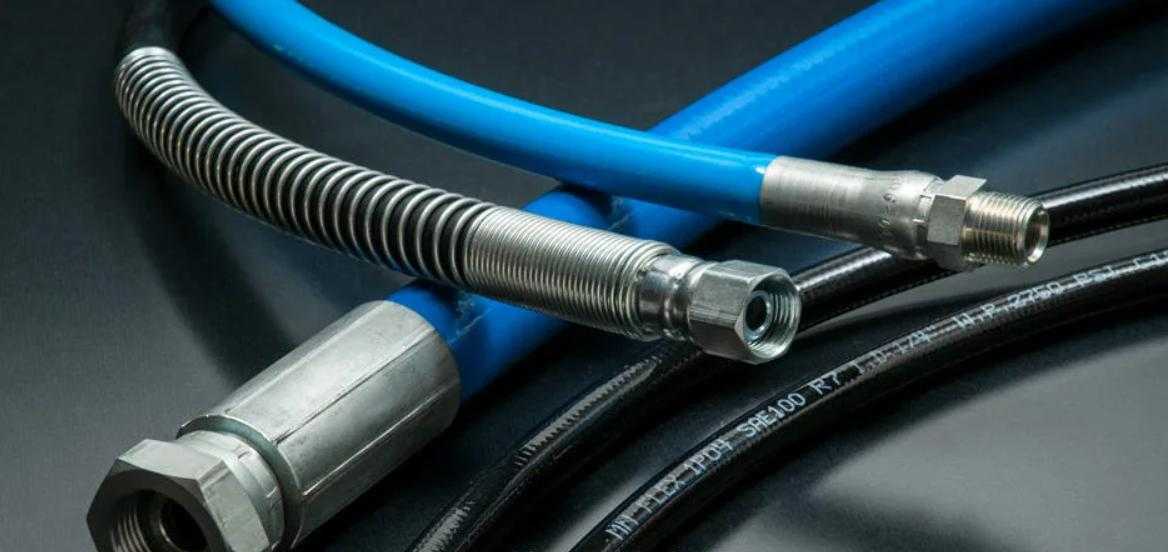How Do You Choose the Right Metal Pressure Hose for Industrial Applications?
How to Select the Right Metal Pressure Hose for Your Operation
When it comes to industrial operations, ensuring reliable fluid and gas transfer under pressure is paramount. Metal pressure hoses are crucial components in a wide range of industries — from petrochemical and power generation to pharmaceuticals and food processing. However, not all metal pressure hoses are created equal. Selecting the right one requires a thorough understanding of your operational needs, hose construction, material compatibility, and application-specific requirements.
This article serves as a comprehensive guide to help you choose the right metal pressure hose for your operation, ensuring performance, safety, and cost-efficiency.
According to a Metal Pressure Hoses Market report, the industry is expected to grow significantly in the coming years.
More Info : https://www.marketresearchfutu....re.com/reports/metal
Why Metal Pressure Hoses?
Metal pressure hoses are known for their ability to handle extreme temperatures, high-pressure environments, and corrosive substances. Unlike rubber or plastic hoses, metal hoses can operate in severe conditions while providing long service life and excellent reliability.
Benefits include:
Resistance to high pressures and temperatures
Flexibility with durability
Compatibility with aggressive chemicals
Fire and moisture resistance
Longevity in demanding environments
However, improper hose selection can lead to system inefficiencies, frequent maintenance, or even dangerous failures. That’s why selecting the right hose is not a one-size-fits-all decision.
1. Understand Your Application Requirements
Start by thoroughly analyzing your operation. Ask the following questions:
a. What is the medium being conveyed?
Identify whether the hose will carry gases, liquids, steam, or slurries. Know the chemical nature of the medium—corrosiveness, abrasiveness, viscosity, and toxicity. For example, transporting acidic chemicals will require a hose material with high corrosion resistance like stainless steel 316L.
b. What are the pressure and temperature ranges?
Operating pressure and temperature are key factors. Be sure to consider both working pressure and burst pressure. Similarly, identify continuous and peak temperatures. Most metal hoses are designed to work between -200°C to +800°C, but material and braid design play a major role in temperature tolerance.
c. What are the installation conditions?
Understand the environment in which the hose will be used. Is it indoor or outdoor? Will it be exposed to UV, saltwater, vibration, or mechanical abuse? Additionally, note whether the hose will be stationary or moving, and if there will be axial, lateral, or angular movement.
2. Know the Hose Construction
A metal pressure hose typically comprises two main components: a corrugated metal hose and an outer braid.
a. Corrugated Core
This is the flexible core made of thin-walled stainless steel, often in a helical or annular pattern. The design allows for flexibility while withstanding internal pressure. Helical hoses offer better flexibility, while annular ones provide improved strength and are preferred for dynamic applications.
b. Braid Layer
Braiding made of stainless steel wire is added over the hose to increase its pressure capacity and provide restraint against elongation. Single braid is suitable for moderate pressure, while double braid enhances strength for higher-pressure uses.
Some hoses may include multiple layers or external covers for added protection from abrasion, insulation, or contamination.
3. Choose the Right Material
Selecting the right material is essential for performance and longevity. The most commonly used materials are:
Stainless Steel 304: Economical, good corrosion resistance, suitable for general-purpose applications.
Stainless Steel 316/316L: Enhanced corrosion resistance, especially against chlorides and acidic environments. Ideal for chemical and marine applications.
Bronze or Monel: Used for highly specific corrosive or marine applications.
Inconel, Hastelloy, or Tantalum: Premium materials for extremely corrosive or high-temperature applications.
Always consult a material compatibility chart and cross-check with the conveyed fluid and environment.
Final Thoughts
Selecting the right metal pressure hose involves more than just picking a size or material from a catalog. It’s a strategic decision that influences safety, efficiency, and cost-effectiveness in your operations. By evaluating your needs holistically — from media and pressure requirements to environmental conditions and compliance standards — you can ensure long-lasting performance and minimal downtime.
When in doubt, consult with a hose specialist or manufacturer. They can help you design a custom solution tailored to your operation’s specific needs.
The right metal pressure hose is not just a component — it’s a critical part of your system’s integrity. Choose wisely, and it will serve you reliably for years to come.















